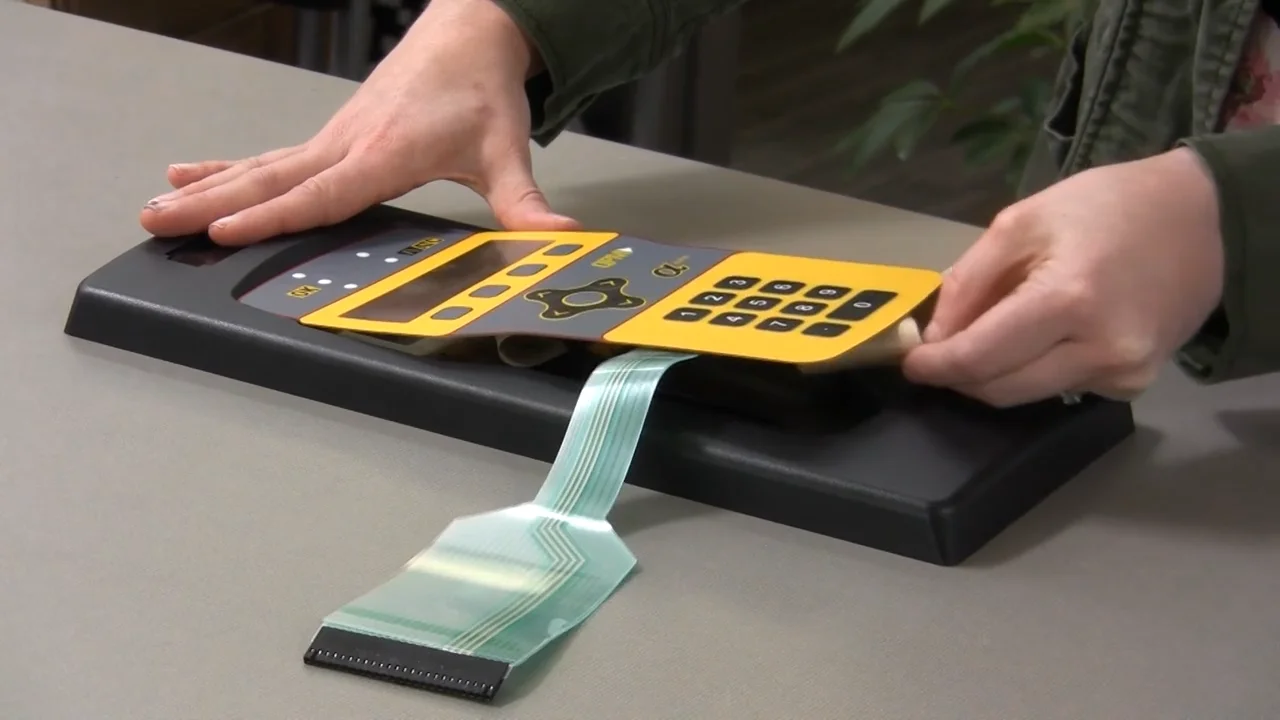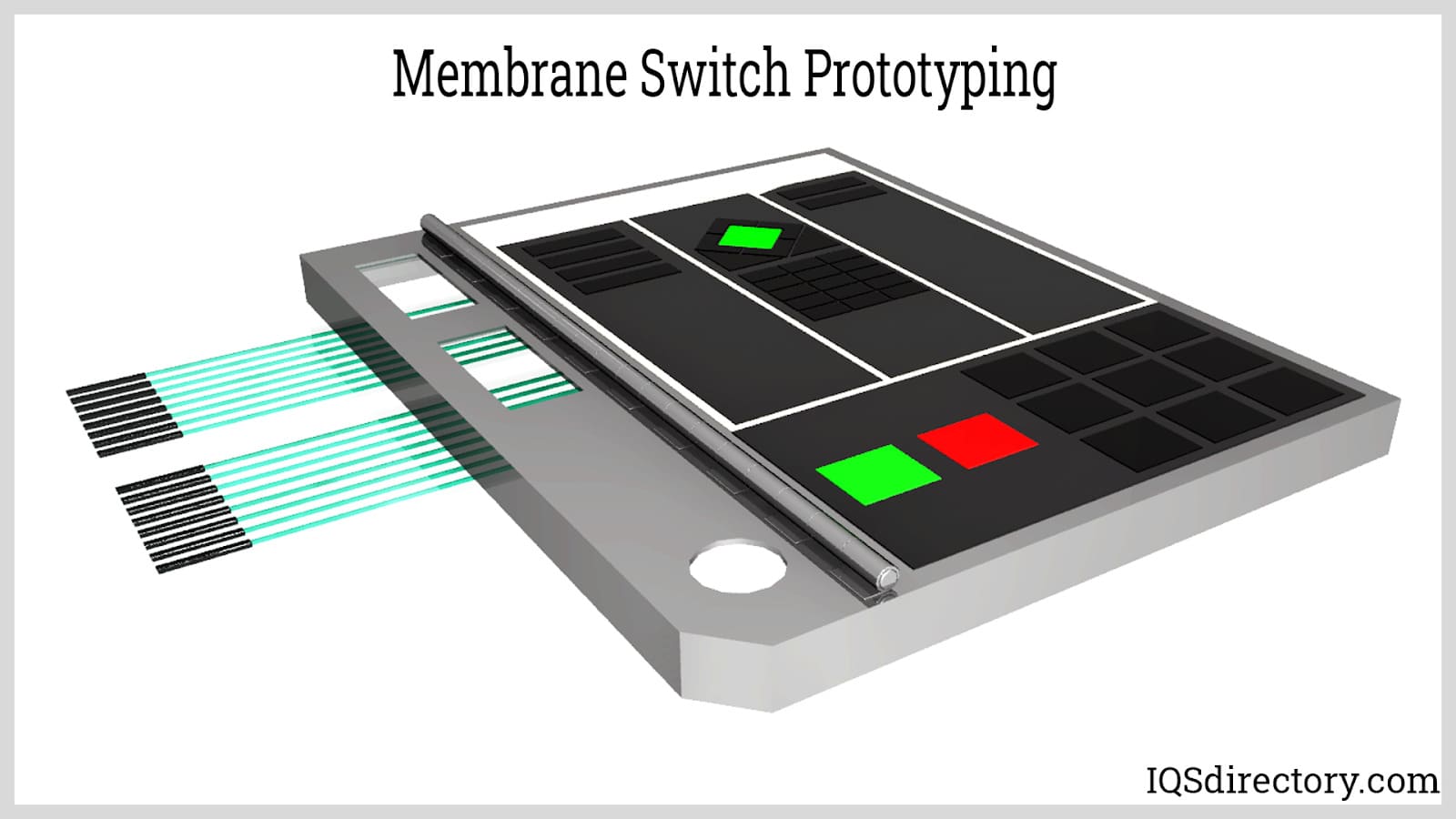The Total Guide to Membrane Switch Modern Technology and Its Applications
The Total Guide to Membrane Switch Modern Technology and Its Applications
Blog Article
Understanding the Functionality of Membrane Layer Changes for User User Interface Instruments
The performance of membrane switches over represents a considerable innovation in individual interface design, integrating performance with aesthetic adaptability. As industries progressively prioritize user experience, comprehending the nuances of membrane button technology ends up being essential.
What Are Membrane Layer Buttons?
Membrane switches are cutting-edge interface devices that facilitate individual communication with digital equipment. These flexible elements are composed of multiple layers, consisting of a visuals overlay, spacer, and a published circuit layer. The style permits a smooth combination right into numerous electronic devices, boosting both the visual and functional facets of interface.
Membrane buttons are frequently utilized in a wide range of applications, from family home appliances to industrial equipment and clinical gadgets. Their building normally features a slim profile, making them a suitable choice for portable styles. The responsive comments supplied by these buttons can be engineered to fulfill particular individual preferences, guaranteeing efficient communication in between the customer and the gadget.
Durability is one more considerable benefit of membrane layer buttons, as they are immune to dirt, wetness, and chemicals, which enhances their lifespan sought after atmospheres. In addition, these switches can be personalized in regards to form, size, and graphic design, enabling branding and user-specific attributes. Generally, membrane switches represent a functional solution for boosting user experience in digital devices, incorporating performance with visual charm in an effective way.
How Membrane Layer Switches Job
Operating on a simple principle, membrane switches use a layered construction to sign up customer input efficiently. Each switch contains numerous layers, including a printed circuit layer, a spacer layer, and a top graphic layer, which are designed to collaborate effortlessly. When a user presses the leading layer, it presses the spacer layer, bringing the conductive components of the circuit layer into contact with each other.
This contact produces a shut circuit, signifying the device to implement a certain function. The layout allows for numerous configurations, consisting of responsive feedback, which can enhance the individual experience by giving a physical sensation upon activation. The materials utilized in membrane switches typically consist of flexible substratums, such as polyester or polycarbonate, which make certain durability and durability versus deterioration.

Secret Benefits of Membrane Layer Buttons

One more considerable advantage is their compactness. Membrane layer buttons are thin and lightweight, which allows producers to conserve area in their devices without giving up functionality. This feature is specifically useful in applications where weight and volume are important considerations.
Additionally, membrane layer buttons are resistant to dust, moisture, and chemicals, boosting their resilience. This resilience prolongs their lifespan and minimizes the requirement for frequent replacements, resulting in cost financial savings over time.
Furthermore, the responsive feedback given by membrane buttons can be enhanced to improve customer communication. They can consist of functions such as raised buttons or audible clicks, improving functionality and customer experience.
Applications Across Industries
User interface tools using membrane layer switches are widespread in a vast range of industries, showcasing their see here adaptability and capability. Membrane Switch. In the medical sector, membrane buttons are important to devices such as diagnostic equipment and client surveillance systems, where their toughness and simplicity of cleansing are crucial for maintaining health requirements. In the vehicle industry, these switches are employed in control panel controls and infotainment systems, providing a smooth and modern user interface for customers.
In addition, the customer electronics market gain from membrane buttons in home appliances and portable devices, where small layout and user-friendly user interfaces improve customer experience. Industrial applications additionally leverage membrane layer changes for control board in machinery and automation systems, stressing their robustness and resistance to extreme settings.
In the aerospace and defense industries, membrane switches are used in cockpit controls and devices, where dependability and performance under extreme problems are paramount. In addition, the video gaming market increasingly includes membrane switches in controllers and arcade machines, adding to an appealing customer experience. In general, the versatility of membrane layer switches allows their extensive usage across countless sectors, underscoring original site their significance in modern user interface design.
Future Patterns in Membrane Layer Switch Over Technology

Additionally, making use of sophisticated materials, such as polycarbonate and polyester films, is expected to increase, offering improved sturdiness and resistance to environmental stress factors. These products contribute to the general longevity of membrane layer buttons, making them ideal for harsher industrial applications.
Additionally, the incorporation of clever technology, including IoT connection, will enable membrane layer switches to communicate with other tools and systems, promoting a much more interactive user experience. This fad straightens with the growing demand for wise gadgets throughout various industries, look at this now from medical care to customer electronic devices.
Last but not least, personalization alternatives are anticipated to increase, allowing makers to produce bespoke options tailored to details individual requirements and choices. These advancements will position membrane layer switches as necessary components in the evolution of individual interface innovation.
Verdict
In conclusion, membrane changes stand for a crucial innovation in user interface modern technology, supplying a dependable and flexible solution for varied digital applications. Their layered building helps with portable layout, while functions such as tactile comments improve individual communication. The durability against environmental factors further strengthens their utility across multiple sectors. As advancements in product science and touch sensing modern technologies continue, the capability and applicability of membrane switches are anticipated to expand, enhancing their significance in modern-day electronic tools.
Report this page